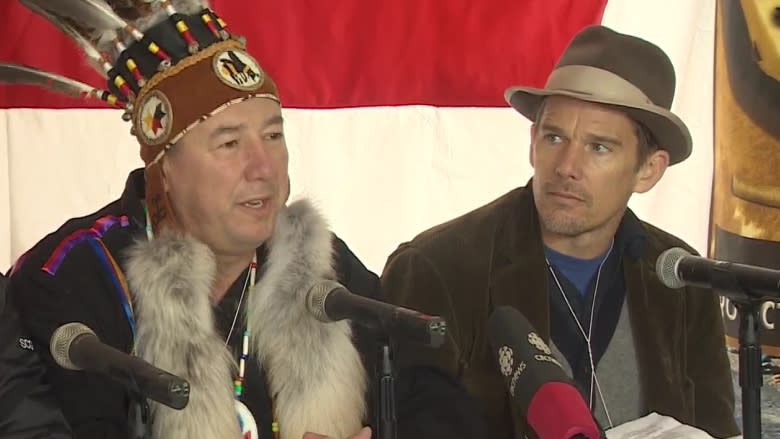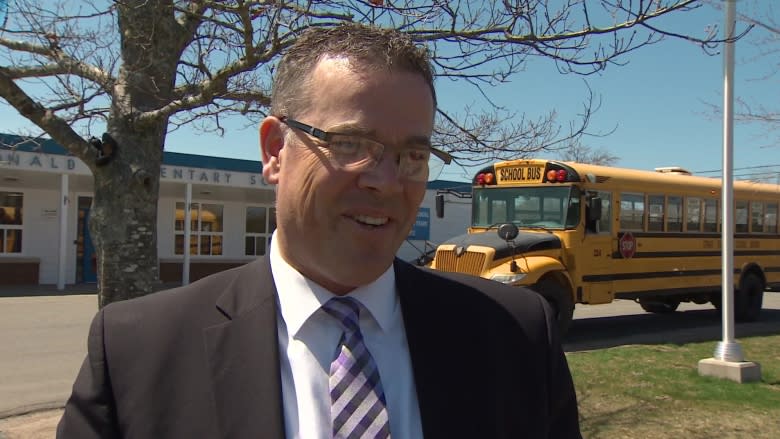Indigenous student suspension numbers trouble advocates
Indigenous students are suspended in disproportionately high numbers at a northerm Nova Scotia school board, a figure that troubles some education advocates and First Nations leaders.
A CBC News analysis of data has found that while Indigenous youth represent just five per cent of enrolment at the Strait Regional School Board, they make up nearly a quarter of all suspensions. The board runs schools in Antigonish, Guysborough, Inverness and Richmond counties.
"I'm not very happy about that at all," said Chief Paul Prosper of the Paqtnkek Mi'kmaw Nation, which is about 15 minutes east of Antigonish and falls under the jurisdiction of Strait Regional.
About 105 youth from his community attend public schools.
Ongoing conversations with the board
Prosper said he and band officials have had ongoing talks with school board officials regarding issues like student suspensions and academic results.
Education advocates say there are a number of factors behind the higher suspension numbers, including too few Indigenous teachers, a curriculum that doesn't reflect the background of its learners, and poverty.
Out-of-school suspensions result in a student being sent home for a maximum of 10 days. Students can also receive in-school suspensions where they continue to do schoolwork in a place like the principal's office or a resource room.
CBC News analyzed suspension data from five of Nova Scotia's eight school boards. Two other boards said they do not gather information on the racial background of those suspended, while the Conseil scolaire acadien provincial had too few suspensions to draw conclusions. The data also does not include schools run by First Nations.
Strait region suspension numbers
Indigenous students generally, but not always, made up a disproportionately high number of suspensions. The numbers at Strait Regional School Board were most pronounced.
Just under half of all suspended students at Strait Regional self-identified their race in the two years analyzed.
- In 2014-2015, students of Indigenous descent accounted for 20.3 per cent of the 458 out-of-school suspensions, but represented just six per cent of the overall student population.
- In 2015-2016, students of Indigenous descent accounted for 24.8 per cent of the 605 suspensions, but represented just five per cent of the student body.
Data provided by the school board shows 10 per cent of all Indigenous students enrolled at Strait Regional were suspended in 2014-2015, and 12 per cent the next year.
In contrast, a similar CBC News analysis of African-Nova Scotian student suspensions found Strait Regional suspended black students in the lowest proportion of the five school boards.
Paul Landry, the board's director of programs and student services, said the board has implemented a number of measures to address the suspension problem among Indigenous students. Those include adding more student services support, making greater use of a school psychologist and hiring more Indigenous staff.
At present, there are seven staff members of Indigenous descent working for the board:
- Four of the 481 full-time positions that include teachers and school administrators.
- Two of the 105 teacher assistants.
- One of the five student support workers employed by the board.
Landry said the board is even looking at cultural differences when it comes to how students learn.
"Many of our Aboriginal students are hands-on learners and as a result they tend to learn better actively engaged in activities, activities that involve movement and so on that aren't sedentary," he said.
Academic success
Academically, Indigenous students lag behind their peers in the province. According to reading, writing and math assessments for students in grades 3, 4, 6 and 8, the percentage of Indigenous students that meet the standard trails the overall student population, but is generally ahead of African-Nova Scotian students.
Spencer Wilmot is the director of education and student services with the Native Council of Nova Scotia, an organization that advocates on behalf of off-reserve Indigenous people. He said the education system is getting better at meeting the needs of Indigenous learners, including having material that is culturally relevant.
"In my days growing up, we had nothing and what there was, it was all negative. That's changing," he said.
He said with today's curriculum including positive Indigenous content and more of it, it helps students feel proud of themselves and who they are.
What about band-run schools?
One solution being pondered is whether it would be better for Indigenous students to attend band-run schools, something Eleanor Bernard supports. She's the executive director of Mi'kmaw Kina'matnewey, the governing body for band-run education in 12 of Nova Scotia's 13 First Nation communities.
"Things have improved because we've taken control of our education system," she said, pointing to improved math and literacy rates at the schools.
Several First Nations, including Paqtnkek, don't have schools.
Prosper said that a year and a half ago, the community looked at setting up its own schools but the idea was rejected by 60 per cent of residents when it went to a vote. He's personally in favour of the idea.
Bernard thinks band-run schools are a better model because teachers tend to be from the community, they know the families and students, and decisions are made from within the community.
"We can do a better job," she said.



